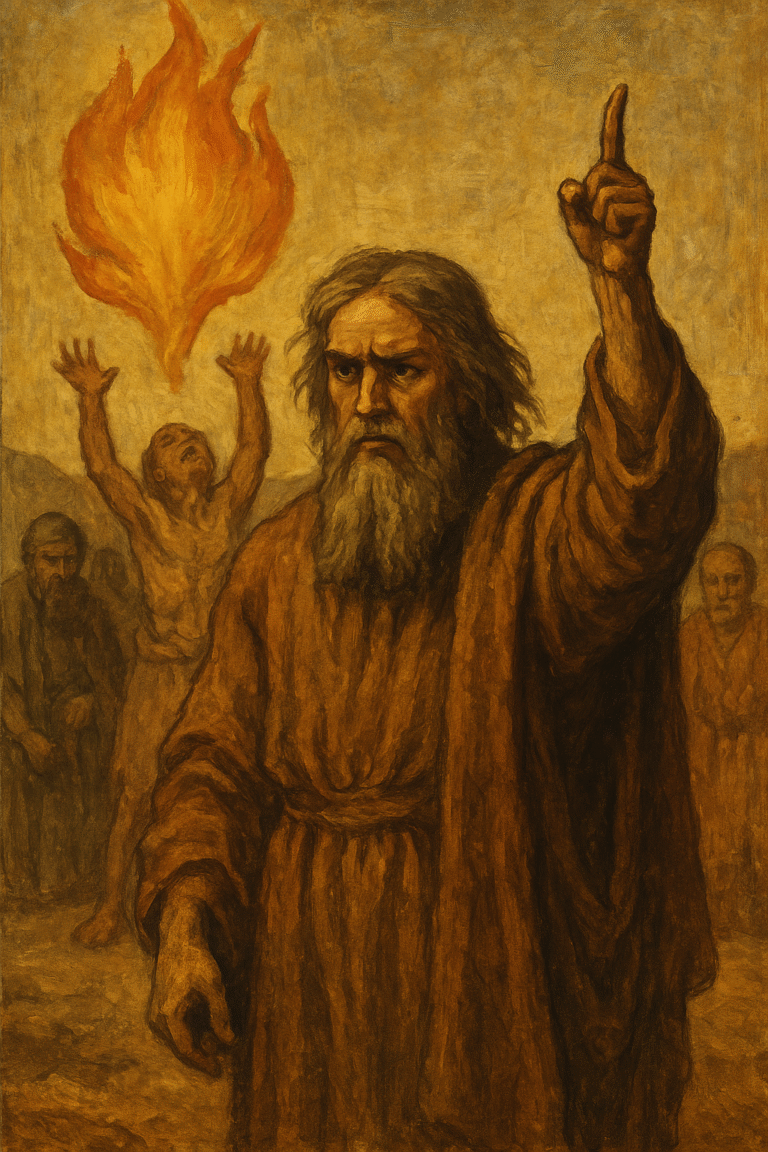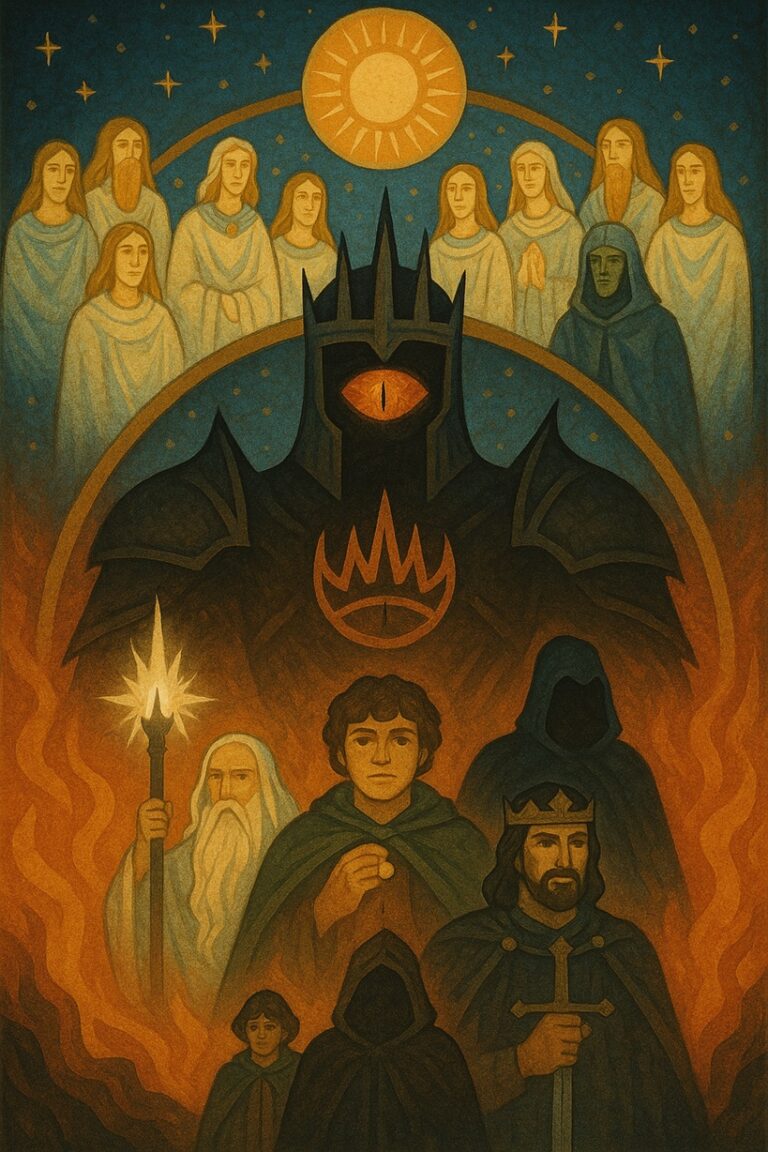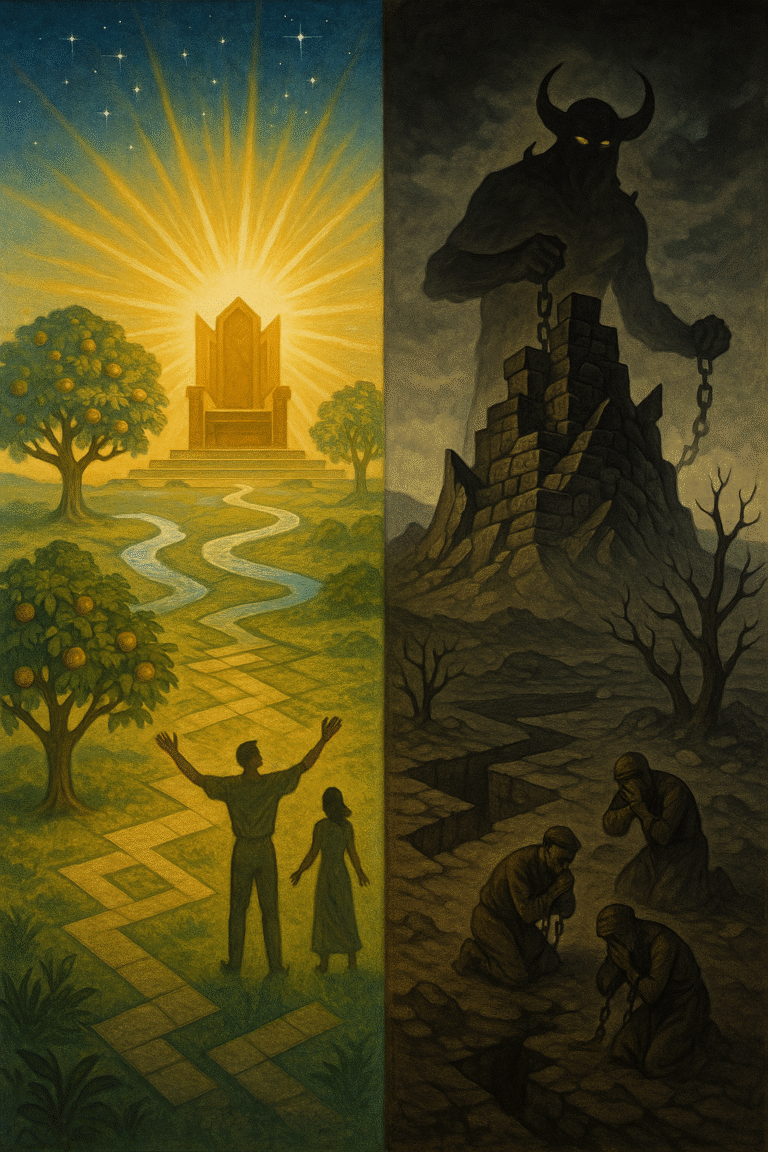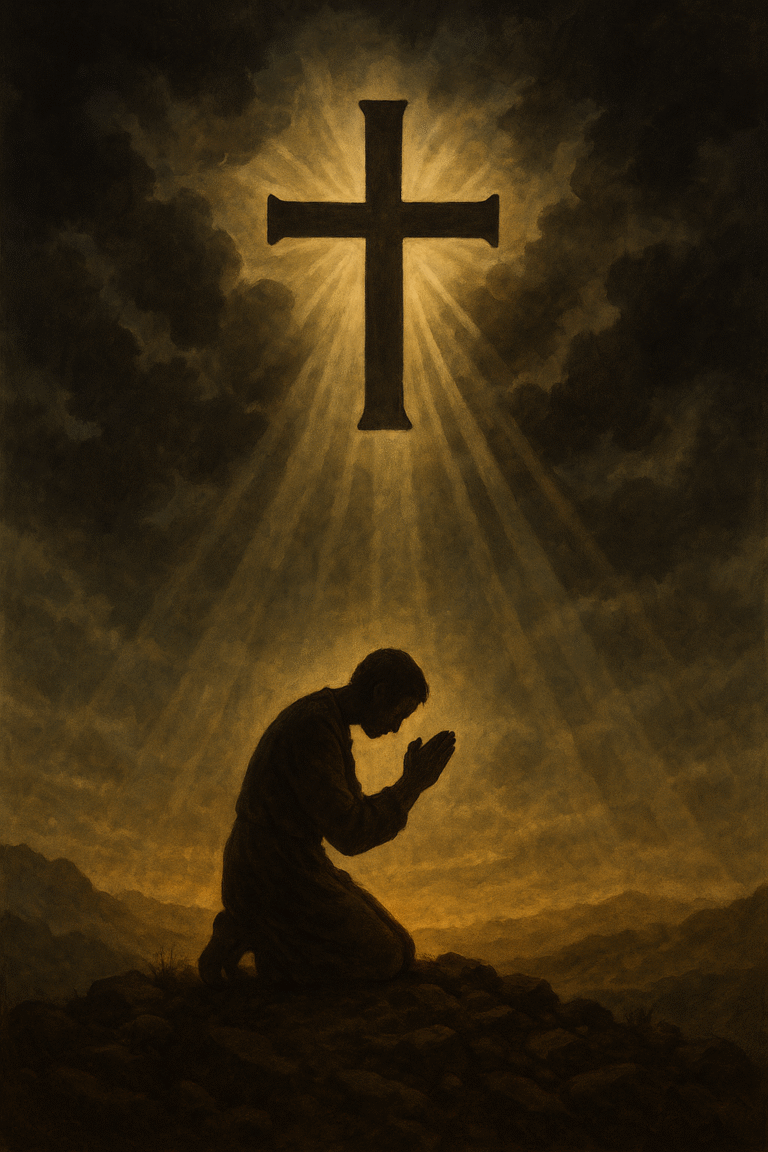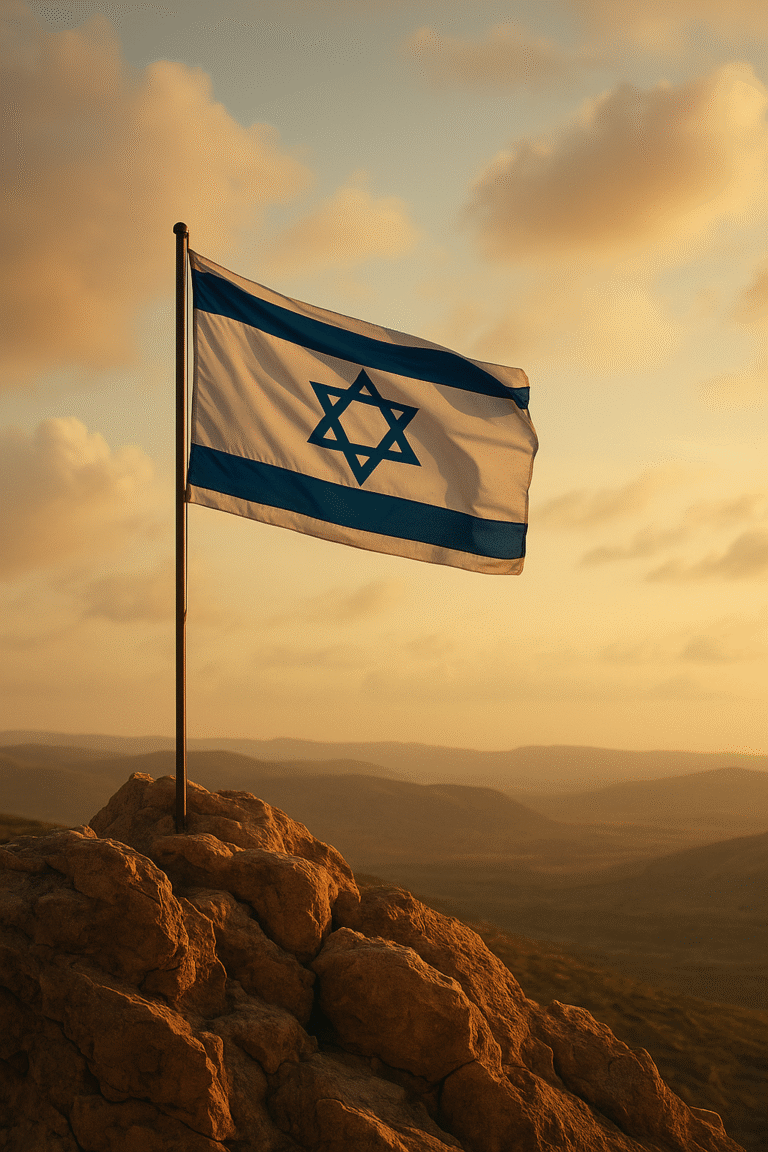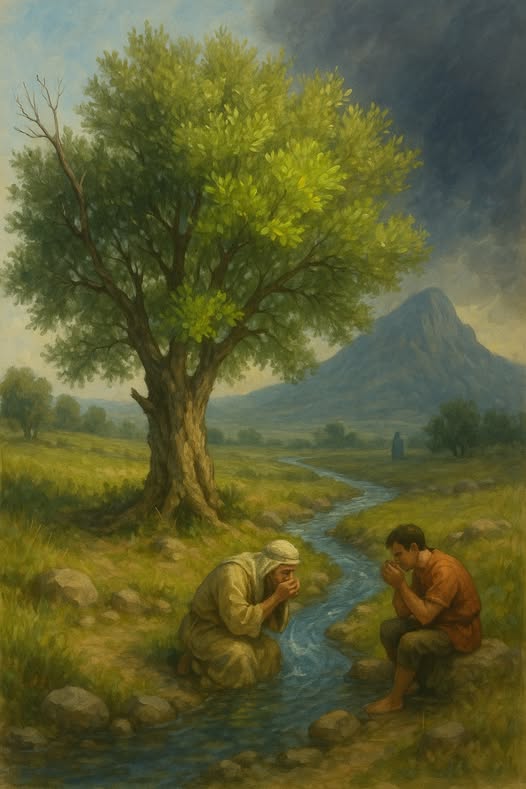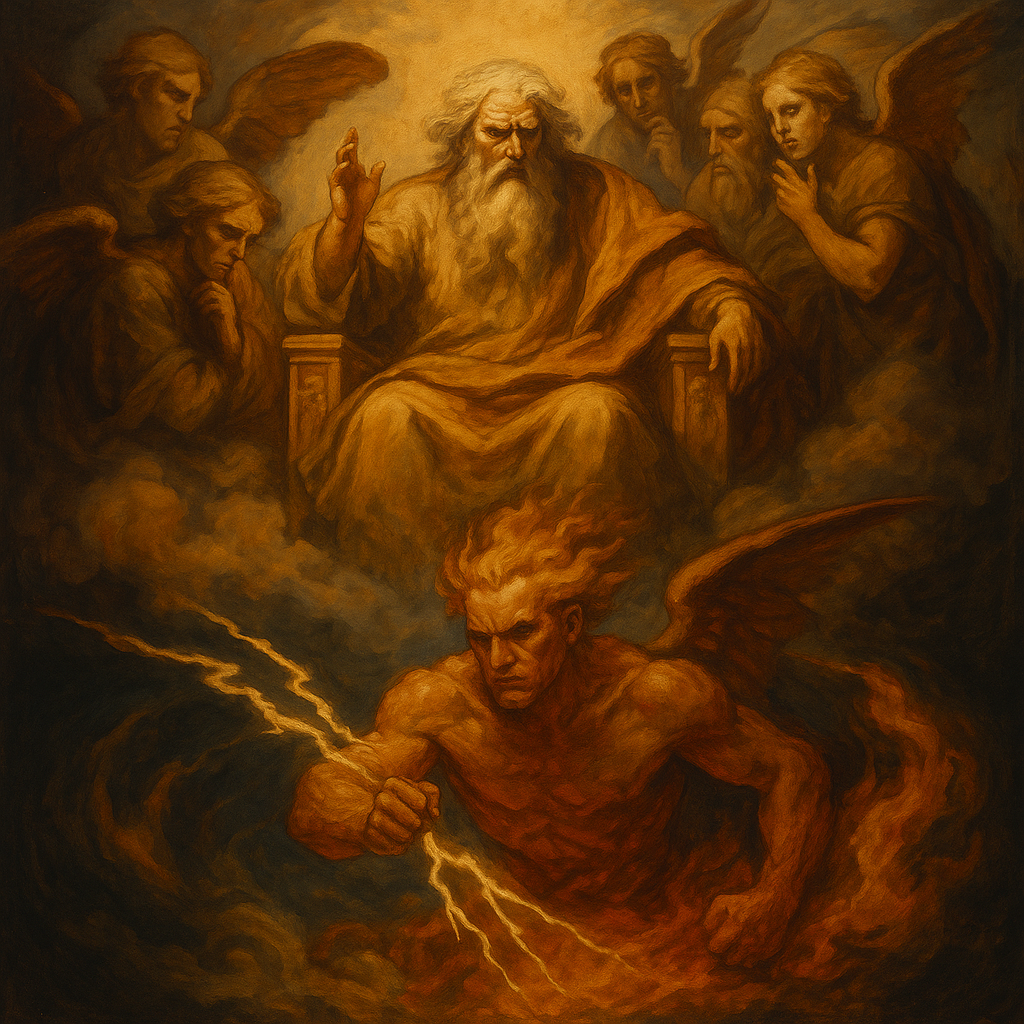
The Bible paints a picture of a God who rules not alone but through a divine council, a heavenly assembly of spiritual beings tasked with overseeing the nations. These lesser “gods,” or bene elohim, were given authority over the nations after Babel (Deuteronomy 32:8–9) but later fell into rebellion. Psalm 82 shows God standing in judgment over these corrupt rulers, who were supposed to govern justly but failed. This divine council structure is not a myth. It is a reality reflected and then twisted in the mythologies of the nations.
Deliberation Without Dethronement: Yahweh’s Supervision
The heavenly court in the Bible is not a democracy, nor a rivalry among equals. Yahweh rules, but He invites participation. In Job 1–2, the accuser (haśśāṭān) comes before the council with permission to test Job. In 1 Kings 22, Yahweh asks for a strategy to bring down Ahab, and various spirits respond until one offers a solution. In Daniel 7, thrones are set in place, and “the court sat in judgment.” These scenes highlight a key truth: Yahweh allows the bene elohim to participate, but His will is never overthrown. The contrast with pagan myth is striking. Yahweh does not vanish. He does not lose to chaos. He remains enthroned and just.
The Divine Council and the Nations
Deuteronomy 32:8–9 reveals that after Babel, Yahweh divided the nations among the sons of God (bene elohim), assigning each nation to a spiritual ruler, except Israel, which He kept for Himself. Psalm 82 depicts God’s judgment on these divine beings for ruling unjustly. They are called gods (elohim) and are expected to reflect God’s justice, but instead they lead the nations into idolatry, oppression, and violence. Yahweh declares their doom: though they are gods, they will die like mortals. This background sets the stage for understanding the gods of Egypt, Babylon, Greece, and Rome, not as fictions but as rebellious spiritual beings wasting their given authority.
Corrupted Imitations: The Rise of the Rebel Storm God
A clear mythological pattern emerges across the ancient world: a distant or passive creator god (like El, Anu, or Uranus) fades into the background. In his place, a younger storm god rises to power by defeating a chaos monster, often a sea beast. Baal defeats Yam. Marduk slays Tiamat. Zeus overthrows the Titans. This storm god then seizes control of a divine council, assembling other deities under his command. These new councils mirror the structure of Yahweh’s own heavenly assembly, but they are ruled by usurpers. The result is a warped version of the true cosmic order.
These councils were not imagined from nothing. They were imitations, counterfeit divine assemblies rooted in spiritual rebellion. The gods of the nations remembered the real throne room of heaven and mimicked its structure while rejecting its King. They claimed to rule with divine wisdom, but their rule led to chaos, bloodshed, and idol worship. Their councils, like their leaders, were corrupt.
This pattern reveals a deliberate strategy. These rebellious spirits did not deny the existence of the true Creator. They simply pushed Him out of reach and claimed His authority for themselves. Satan’s role in this is central. He was not assigned a nation after Babel, unlike the other bene elohim. Yet he inserted himself as the head of these corrupted pantheons, using storm god imagery to project stolen glory. Thunder, lightning, kingship, these were meant to reflect Yahweh, but Satan co-opted them to inspire fear and worship.
This was not merely myth. It was propaganda for a false throne and a counterfeit council, designed to seduce the nations and obscure the memory of the true God who still reigns.
Satan as Cherub: The Storm Guardian Turned Usurper
Before his rebellion, Satan is identified as a guardian cherub in Ezekiel 28:14, a high-ranking throne guardian, not a lowly messenger. The biblical portrayal of cherubim is far from the winged infants of later art. They are awe-inspiring, fearsome beings stationed in the heart of the divine presence. When Yahweh appears in glory, He often does so in a storm theophany, arriving in thunderclouds, lightning, fire, and wind. This is not chaos, but majesty. In Ezekiel 1 and 10, the cherubim move in unison with the wheels of God’s throne, carried along by the Spirit.
The association of storm, fire, and judgment with divine presence is no accident. It is the language of Yahweh’s kingship. The cherubim do not create these phenomena but accompany them as guardians of the divine throne. Satan’s origin among these exalted beings reveals the depths of his corruption. He twists the heavenly reality he once beheld into a counterfeit, turning truth into propaganda. His rebellion is not just against Yahweh’s rule, but against the entire cosmic order that testifies to Yahweh’s majesty.
Theological Implications
This is not comparative religion. It is spiritual war exposed. The gods of the nations were real beings who rebelled against Yahweh. Their stories are tools of deception, crafted to justify their revolt. Satan ruled over these false councils, presenting himself as the storm god of the nations, a counterfeit king cloaked in stolen glory.
But Yahweh has never left His throne. His rule is unshaken. His council endures. And Christ, obedient, righteous, victorious, has inherited the nations and will return to judge the rebels and restore the order of heaven and earth.
Conclusion
The Divine Council is not a metaphor. It is the true structure of heavenly governance, revealed by God and upheld by His righteousness. The pagan councils are not alternatives. They are distortions, forged by spiritual traitors who followed Satan’s ambition and received the worship of deceived nations.
But the story is not over. Christ sits at the right hand of the Father, above every power and principality. His return is certain. The false thrones have been shattered by His ascension. The rebellious gods will fall. And Yahweh’s council will be restored, with His faithful people enthroned in His council.
Discussion Questions
- How does the biblical idea of the Divine Council challenge or expand your understanding of the spiritual realm?
- Why do you think the Bible presents rebellious gods using the same storm and chaos imagery as Yahweh’s true throne guardians?
- What is the significance of Yahweh being enthroned above the waters, especially in contrast with the beast from the sea?
- How does recognizing Satan as a former cherub enhance the meaning of the symbols he imitates?
- In what ways do modern portrayals of spiritual warfare obscure or clarify the cosmic battle shown in Scripture?
Want to Know More?
- Michael S. Heiser, The Unseen Realm: Unpacks the reality of the Divine Council in Scripture and how it has been overlooked.
- Carmen Imes, Bearing God’s Name: Helps reframe biblical theology around God’s authority and His people as His representatives.
- Daniel Block, For the Glory of God: Explores biblical worship in contrast to pagan religion.
- John Walton, Ancient Near Eastern Thought and the Old Testament: Compares biblical theology with ANE literature without making false equivalences.
- Tremper Longman III, Confronting Old Testament Controversies: Addresses mythic patterns like sea monsters and divine conflict

